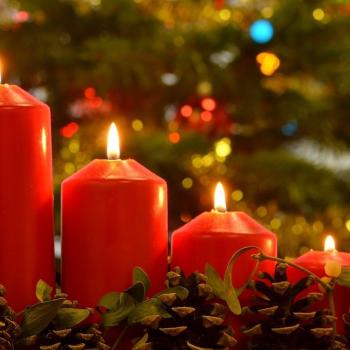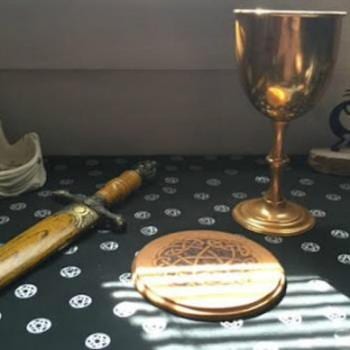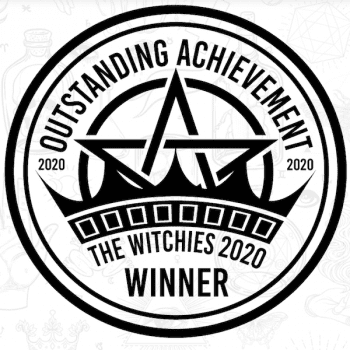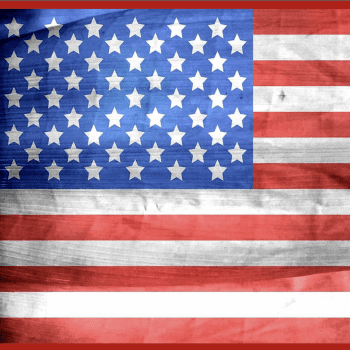Patricia Lafayllve is a Heathen scholar, author, and speaker. She’s been involved in several Heathen groups over the years and is garnering quite a reputation as a writer. Our own Sean Harbaugh was lucky enough to sit down with her and discuss her books, her practice, and the differences between the words Pagan and Heathen.
Sean Harbaugh: Hi Patty, thank you for taking time for this interview. I am honored. So, we’ll start off the basic question, can you please tell us about yourself?
Patricia Lafayllve: Hi, Sean. Thanks for the opportunity!
I grew up in a small town in Connecticut with my parents and my younger brother. I still live in Connecticut. I’ve got my Master’s degree in English, and work as a professor. At this point I’ve published two heathen-related books: “Freyja, Lady, Vanadis: An Introduction to the Goddess” (Outskirts Press) and “A Practical Heathen’s Guide to Asatru” (Llewellyn). I’ve written a number of published articles, as well. I started teaching and leading rituals back in the early-mid 1990’s. The biggest question I get asked is this: “How do you pronounce your last name?” It’s quite simple, really – la-FILE. See? It’s just that you can’t actually look at my name and say it at the same time…I’m on a first name basis with a lot of people.
How did your pagan path evolve? Can you describe your personal practice?
 My parents raised me Irish Roman Catholic. Frankly, I was fairly devout – at one point, my mother thought I was going to be a nun! – and created a shade garden in our backyard dedicated to Mary, the mother of Jesus. I used to go out there, in the shade near the forest line, and pray to her. In any event, by the time I was fifteen I was exploring other branches of Christianity, Judaism, and at the same time studying Eastern philosophies like Buddhism and Tao. Remember, this was the mid-1980’s and I lived in a small town. I’d heard about “witches,” but, in the era before the internet, there just wasn’t a lot of information out there. So I kept going to the shade garden or a rock formation in the woods to meditate, pray, and generally think things over.
My parents raised me Irish Roman Catholic. Frankly, I was fairly devout – at one point, my mother thought I was going to be a nun! – and created a shade garden in our backyard dedicated to Mary, the mother of Jesus. I used to go out there, in the shade near the forest line, and pray to her. In any event, by the time I was fifteen I was exploring other branches of Christianity, Judaism, and at the same time studying Eastern philosophies like Buddhism and Tao. Remember, this was the mid-1980’s and I lived in a small town. I’d heard about “witches,” but, in the era before the internet, there just wasn’t a lot of information out there. So I kept going to the shade garden or a rock formation in the woods to meditate, pray, and generally think things over.
I eventually ran into paganism. I obtained a copy of Raymond Buckland’s Complete Book of Witchcraft when I was about eighteen-nineteen, and slowly worked my way through it on my own. We all talk about that “click” when we find our paths – Buckland’s book taught me a lot, but it was enough to show me that I am pagan, but I never really had the “click.” I learned Michael Harner’s core shamanic methods in about 1993-1994, and used those as my spiritual practice while I maintained a Neo-Pagan approach to faith. I never swore an oath/made a ritual where I declared myself Asatru, so I don’t have a firm date, but I was pretty much calling myself heathen by about 1995.
20/20 hindsight allows me to look back and think the signs were there all along. In essence, my personal practice has not changed – I still go out into the woods, or near a place in nature, and meditate/pray. As a Freyjasgythja, my focus is on Freyja, although as a polytheist I have no issue having relationships with the Norse pantheon’s deities. Our two major ritual styles are blot and sumble, and I do those with my kindred, my larger community, and others, but I have to say that, when it comes to my home and my hearth, I’m a ritual minimalist. Light a candle. Burn some incense. Offer mead, or beer. Meditate when the need calls. I find deep meaning in the small things.
You’re also a brewer. In your opinion, how does the alchemy of brewing work within your practice?
I am an amateur mead maker – there are so many fantastic brewers out there that I don’t consider myself at their level of mastery. I make good mead, but I’ve got a lot of learning left to do. In terms of the process, I try to be mindful of Aegir, who brews mead for the gods.
In terms of alchemy, though, making mead is a transformative process. Everything needs to be cleaned, sterilized, and then the ingredients need to be combined. Yes, at its essence mead is honey, water, and yeast. The combinations of those things matter. The types of yeast matter. What fruits or spices you add to the basic recipe matter. Even the water matters. So it’s a mindful exercise for me. Making mead takes focus and commitment. Then the “magic” happens. Yeast consumes sugar, and belches alcohol. Flavors meld together. Time passes, and this mixture becomes something it wasn’t before. If you’re lucky, it’s good enough to drink. Mead is a sacred liquid in many ways, so there is a bit of combining the mundane to create the sacred. I know that might sound odd, but that is also part of my personal practice. Take the basic ingredients, combine them, and then get out of the way while they transform.
Describe the Asatru path. What’s the difference between a heathen and a pagan?
 Asatru refers to the study, culture, practice and worship of the pre-Christian Northern Europeans. We are reconstructonists, to one degree or another, and work to bring the past into the present. By and large, we worship our ancestors, the Aesir and the Vanir, their allies, and the vættir – the wights of land, sea, and sky. I have to note, though, that there is a wide variety of practice involved. We organize into kindreds, fellowships, tribes, and so forth because our religion and culture are community-based. This is not to say there can’t be solitary heathens – I was one for about seven years – but the overall focus is on community and the ties that bind us together. Finally, it is important to remember that we are not “just” religious – heathens also have specific sets of values, ethics, and cultural references specific to ourselves.
Asatru refers to the study, culture, practice and worship of the pre-Christian Northern Europeans. We are reconstructonists, to one degree or another, and work to bring the past into the present. By and large, we worship our ancestors, the Aesir and the Vanir, their allies, and the vættir – the wights of land, sea, and sky. I have to note, though, that there is a wide variety of practice involved. We organize into kindreds, fellowships, tribes, and so forth because our religion and culture are community-based. This is not to say there can’t be solitary heathens – I was one for about seven years – but the overall focus is on community and the ties that bind us together. Finally, it is important to remember that we are not “just” religious – heathens also have specific sets of values, ethics, and cultural references specific to ourselves.
This is where the term “heathen” has come into play. It is a broader umbrella term for that variety. Some of us lean toward Icelandic or Norwegian culture and practice, some are Anglo-Saxon. We all gather under the umbrella, because our practices link us, but we can be very different. There never was a “one true way,” nor even a fully central leadership, and that is reflected in the term “heathen.”
The question we ask ourselves is whether or not we are pagan at all. If we consider a forest, some of us feel that paganism and heathenry are two different species of trees – oaks and ashes, for instance. Others believe that heathens are one branch of the pagan tree. This sounds pedantic – after all, the words “heathen” and “pagan” often referred to the same types of people – but it is important in terms of identity. As you might imagine, this causes no end of difficulty and miscommunication between heathen and pagan groups. That is truly unfortunate, in my opinion, because it can block interfaith discussions.
You were a longtime member of the Troth and a current member of Two Raven’s Kindred. Are you still with the Troth? How do these groups differ?
The Troth is a national organization with international members. Its goal is outreach – providing resources for heathens and others in order to further enhance our faith. The Troth has a Lore Program, a Clergy Program, and a Steward Program, and is run by the High Rede, a sort of board of directors, who are elected by the membership. The Troth also has a number of quality publications out there, including the journal Idunna and several saga translations.
Two Ravens Kindred, on the other hand, is my heathen family. We are small – eight members – and we are more than a working group. My kindred mates are my brothers and sisters in as many definitions of those words can be. We have no by-laws, swear no oaths to one another, and function on consensus. They’re very different groups!
I am no longer with The Troth. I have always supported that organization, and have held many offices – Steward, High Steward, Vice-Steerswoman, Steerswoman, to name a few – and I created the Lore Program and was its first Provost. I was a Godwoman in the Clergy Program, and wrote several articles for Idunna over the years. I truly feel The Troth is one of the best – if not the best – broad-umbrella heathen organization out there. I have stepped away, but I will continue to recommend The Troth to people who are interested in a national-level approach to heathenry.
You are a known practitioner of Seidh. Can you describe what that is?
Sure. The word seidhr, or seið, is of uncertain origin, but was used by most sources to indicate a number of different practices. Most seem to have involved entering a trance of some kind. In Eiriks Saga Rauða (Erik the Red’s Saga), we have an interesting account of a seidhkona coming to a farm and performing a trance-based series of prophecies. We see a number of stories referring to this kind of prophecy, which is called both spae, or spá, and seidhr. Other practices referred to as seidhr are transformation (one seidh worker changes into a seal to harry a boat), protection (another account has a seidhkona transforming her son into various things, including a butter churn, to guard him from his enemies), and calling fish into a bay to feed the community. It’s not all good, though; seidhr was also used to call up storms, cause ill luck, and bind fetters around the enemy.
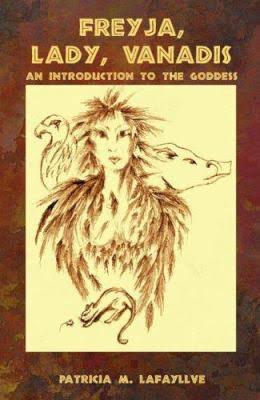 In your book Freyja, Lady, Vanadis: An Introduction to the Goddess you describe (among other attributes) that Freyja is a goddess of battle and death. How do you see her in comparison to other battles goddesses such as The Morrigan?
In your book Freyja, Lady, Vanadis: An Introduction to the Goddess you describe (among other attributes) that Freyja is a goddess of battle and death. How do you see her in comparison to other battles goddesses such as The Morrigan?
Interestingly enough, Freyja is never actually seen in battle. She causes an endless war in order to get Brisingnamen, her necklace, back from Odin. She receives half of the chosen slain warriors into her hall – the other half go to Valhalla – which indicates her connection with battle and death. In Egils Saga, Egil’s daughter refers to her decision not to eat or drink until she “dines with Freyja,” which can mean that women got to Freyja’s halls just as men do.
Freyja does share certain aspects that all battle/death goddesses share. As I said, her connections to battle and to death are clear. We don’t know that she was a sovereignty goddess, as the Morrigan may have also been, but she is next in rank to Frigga, who, as Odin’s wife, runs the show. Freyja may have some connection to the land, too, although the evidence for that is scarce. There is also a connection between Freyja and wealth, and a lesser one with fire. Most of the battle goddesses are just as complex, of course, so it is hard to draw a single line. Comparatively, though, the similarities are interesting.
You wrote a fascinating book called A Practical Heathen’s Guide to Asatru. There is a great deal of research in this book. How difficult was it to write such a resource book such as this? What was the process?
In total, the book took a long time to put together. I did primary research for about two-three years, off and on, and it took another year to write. Then the editing process took another year. It takes work throughout, and I am constantly fact-checking myself.
My scholarship informs my spirituality. It is worth spending the time to do the work, and a number of things can be learned by studying primary and secondary source materials, archeology, and history. As an example, Eir is one of Frigga’s handmaidens, and has a lot to do with healing. Eir is also the name of a Valkyrie, and in that case her name relates to “mercy.” This might mean that Eir, a healer, also gives mercy on the battlefield. This might mean a painless death for one who is fatally wounded. That’s my gnosis about the connection, but there are a couple of sides to healers, and it was through scholarship that I formed the connection.
For me, research and writing come naturally. It was a lot of work, certainly, and my own assumptions were challenged – and sometimes completely revised – based on what I learned as I went along. “Difficult,” though, is not a term I would use, per se. It was difficult in terms of personal sacrifice, but not in terms of research, writing, and revising.
Of these two books, which was your favorite and why?
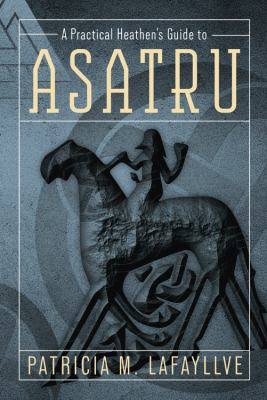 I don’t have a favorite. They’re related books, but the topics themselves are quite different. One is about a single goddess, and the other is a broad overview of an entire faith. Books are like children in that way, I think. You do the best you can, and then you send them out into the world. I am fortunate that both books have been well-received.
I don’t have a favorite. They’re related books, but the topics themselves are quite different. One is about a single goddess, and the other is a broad overview of an entire faith. Books are like children in that way, I think. You do the best you can, and then you send them out into the world. I am fortunate that both books have been well-received.
Do you have any additional writing projects on the horizon?
Yes. I am currently researching materials for a book on seidhr. I think I can add a solid voice to the other voices about seidhr that are already out there. As with everything, there is a great deal of variety in practice, and I want to try and show what seidhr looked like “then” as well as “now.” I began research for a book on Frigga several years back, too. The seidhr book is taking priority right now, but someday I’d like to finish the “Frigga book” that is also inside my head.
What is your greatest passion?
PL: My greatest passion? There are so many! My faith, and the various practices I have developed as a result, drives me and provides me a great deal of satisfaction. While heathens may, or may not, recognize clergy, I consider myself a gythja because I am doing that work as a service to the community. Teaching is also a passion for me; I genuinely love going out there, whether in a classroom, a conference, or a camp-based festival and sharing what I have learned in order to educate others. Teaching and service to the community are probably equal passions.
How do you see paganism and Asatru evolving in the coming years?
That’s a heavy question! I know what I would like to see. I would like to see us evolve independently, but with a recognition and acceptance of one another. There is a tendency to divide ourselves into ever-smaller groups. While I believe that group identity is important, I think that there is a place for tolerance and respect that we can work together to build. Interfaith work is a vital part of education – we are not the same, nor should we be, but we can learn from one another.
Patty, thank you for answering my questions. Do you have anything else you’d like to add?
You’re welcome, Sean. These are good questions! I don’t have anything to add. I look forward to the next time we meet.
I look forward to seeing you again as well.








